Over recent months, ObjectNow has undertaken a dedicated investigation into the unprecedented wave of energy development applications sweeping across Scotland. To carry this out, we deployed advanced large language models trained on Scottish planning law, UK and EU environmental regulation, energy economics, climate science, and freedom of information disclosures.
These systems analysed ministerial speeches, government white papers, planning policies, regulatory reports, peer-reviewed research, and FOI material, cross-checking millions of data points in seconds.
The question was simple: what is really driving the rapid spread of wind farms, pylons, substations, and battery compounds across Scotland’s countryside?
The findings point to a clear conclusion. While the public is told this expansion is about achieving net zero, the evidence shows that surplus generation is repeatedly presented as proof of Scotland’s capacity for independence, suggesting that constitutional politics weigh at least as heavily as climate commitments in driving the current expansion.
Renewable energy has been reframed from climate infrastructure into political capital — proof that Scotland can generate more power than it consumes, export the surplus, and present an economic case for statehood.
This investigation sets out the evidence step by step. It shows how planning law has been reshaped to increase the guarantee of approvals, how carbon and radiological risks are overlooked, how local democracy is sidelined, and how developers are welcomed while campaigners are excluded. It also follows the money, exposing the financial rewards that flow when consents are granted.
This is not about whether one supports or opposes independence. It is about governance, transparency, and accountability. And it raises a fundamental question: are Scotland’s landscapes and communities being sacrificed for political ambition?

Surplus Power and the Independence Narrative
When ObjectNow’s energy economics model analysed Scotland’s electricity generation, National Grid ESO data, and FOI disclosures on curtailment payments, a stark contradiction emerged.
Scotland already produces far more electricity than it consumes. In 2023, almost 18 terawatt hours were exported to the rest of the UK. Ministers present this figure as proof of success, describing Scotland as self-sufficient and capable of powering others. In speeches and policy papers, the surplus is repeatedly highlighted as a cornerstone of the independence case.
Yet the reality beneath the headlines is less flattering. Transmission bottlenecks mean that much of Scotland’s renewable output cannot actually be exported. When demand is low or the lines are full, wind farms are ordered to shut down. Developers are then compensated with curtailment payments, which in recent years have cost UK consumers billions.
From a climate perspective, this is counter-productive. Industrial-scale infrastructure is built at high carbon cost, but a significant portion of the electricity never reaches the grid. The emissions released in construction remain, while the “green” output that was supposed to offset them is wasted.
From a political perspective, however, the waste does not matter. What matters is the image: Scotland produces more power than it needs. That image is political currency, used to argue that an independent Scotland could thrive as an exporter.
Financial incentives reinforce the pattern. Developers profit whether turbines spin or stand idle. Contracts for Difference guarantee prices for generated electricity, while constraint payments compensate for shutdowns. This alignment of corporate and political interests ensures that every new consent strengthens both developers’ balance sheets and the government’s independence narrative.
The result is clear: Scotland’s energy build-out is not driven by climate necessity alone. Surplus generation is repeatedly used as political currency, reinforcing the constitutional case for independence even when that surplus is inefficient or wasted.
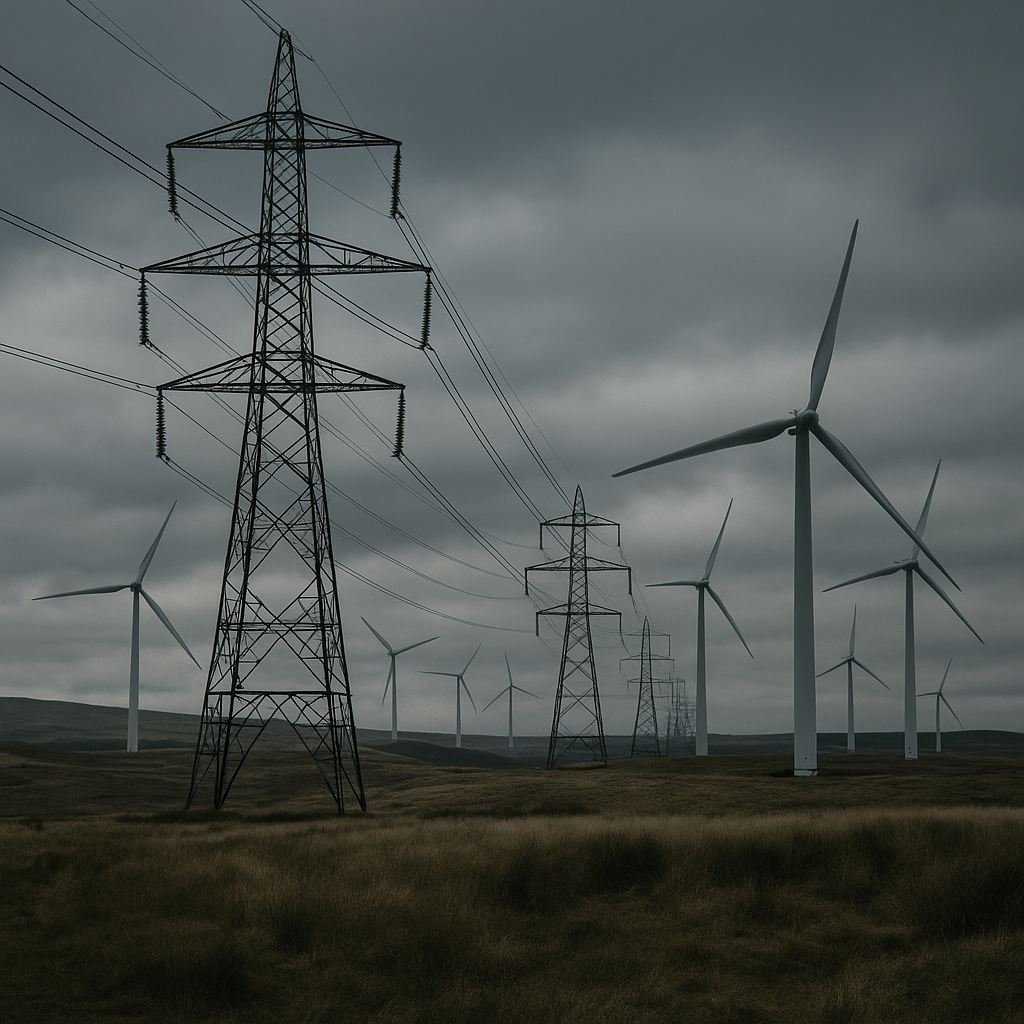
Carbon Contradictions: The Hidden Emissions
If Scotland’s energy expansion were truly about tackling climate change, the carbon costs of construction would be central to every decision. ObjectNow’s climate-science model, trained on lifecycle emissions data and international studies, shows that the opposite is happening.
The numbers are stark. Each wind turbine requires foundations of over a thousand tonnes of reinforced concrete. Cement manufacture alone accounts for nearly 8% of global CO₂ emissions, with each tonne of cement releasing almost a tonne of carbon. Steel for towers, pylons, and substations adds further emissions, as do composites and plastics for blades and cabling. Delivering these materials into remote uplands compounds the footprint.
The greatest contradiction lies in peatland disturbance. Scotland’s peatlands are globally significant carbon stores, locking away millions of tonnes of CO₂. When peat is drained, excavated, or compacted for turbine bases, access roads, or trenching, that carbon is released. Peer-reviewed studies confirm that in many cases, the emissions from peat disturbance cancel out or even exceed the savings of a wind farm over its entire lifetime.
Despite this, planning decisions rarely account for full lifecycle emissions. Developers submit “peat management plans” that describe restoration measures, but these do not prevent immediate and irreversible carbon release during construction. Ministers then cite national targets and grant approvals under NPF4, giving “significant weight” to projects while omitting their upfront climate cost.
Our systems found multiple instances where applications claimed “significant carbon benefits,” while the underlying data showed such high construction emissions that benefits would take decades to materialise — if at all. Communities are assured they are hosting clean energy, when in reality much of it is dirtier than claimed.
The conclusion is unavoidable: Scotland’s net zero justification cannot withstand scrutiny. The carbon costs are real and measurable, yet routinely ignored. The political imperative extends beyond climate stability, with the optics of surplus generation consistently deployed to bolster the independence case.
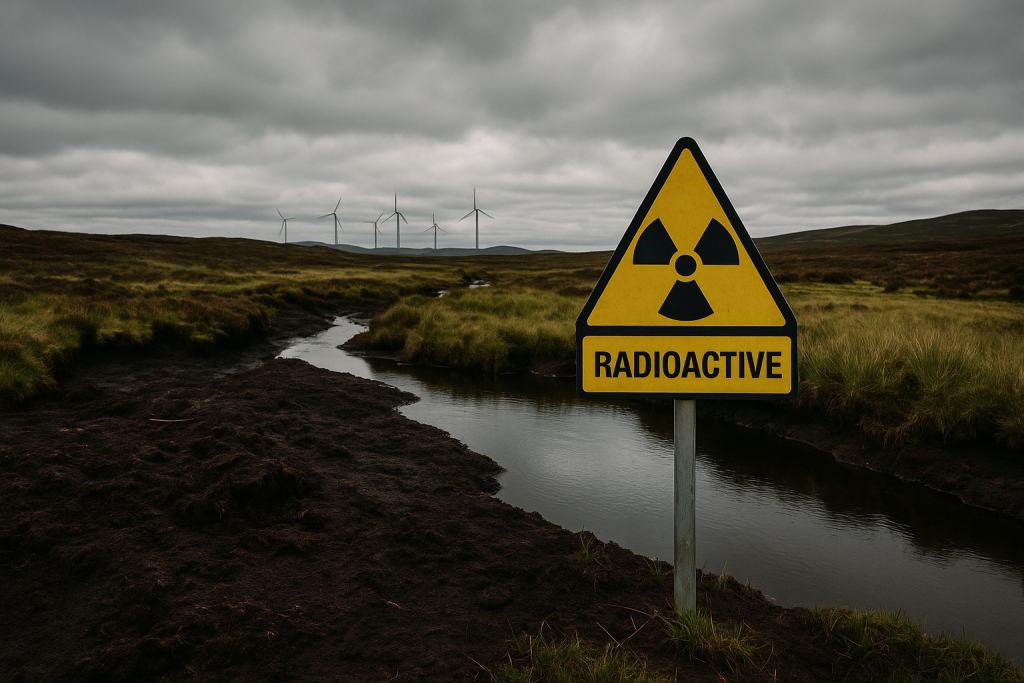
Radiological Risk and Regulatory Failures
Beyond carbon, Scotland’s energy strategy overlooks another serious issue: radiological contamination in peatlands. Fallout from the Chernobyl disaster in 1986 deposited Caesium-137 (Cs-137) across large parts of Scotland’s uplands. With a half-life of around thirty years, significant contamination remains today.
Cs-137 binds to peat and organic matter but can be remobilised when soils are excavated, drained, or trenched — precisely the activities required for turbines, pylons, and substations. Once disturbed, it can enter watercourses, food chains, and wider ecosystems. Peer-reviewed research, including studies in the Journal of Environmental Radioactivity and Heliyon, confirms that Cs-137 persists in Scottish peat and remains mobile. Evidence from Finland and Norway shows measurable uptake by plants, livestock, and wild game decades after soil disturbance.
Despite this, SEPA’s July 2025 report, Radioactivity and Wind Farm Developments on Peatlands, concluded that there is “no realistic risk” to the public from Cs-137 contamination. It further advised that site-specific assessments were unnecessary, limiting its own response to a small four-site national sampling exercise, with results delayed until 2026.
This approach does not meet legal obligations. The Electricity Works (EIA) (Scotland) Regulations 2017 and the Town and Country Planning (EIA) (Scotland) Regulations 2017 require that all significant environmental effects be assessed, including effects on human health. The Ionising Radiations Regulations 2017 demand that credible exposure pathways be identified and controlled “as low as reasonably practicable.” The Environmental Authorisations (Scotland) Regulations 2018 govern any activity liable to mobilise radioactive substances. Internationally, the Aarhus Convention guarantees public access to accurate environmental information. By omitting Cs-137 from site-specific EIAs, regulators and developers are failing to uphold both statutory and international duties.
Thanks to the work of Communities B4 Power Companies, ObjectNow was granted access to a forthcoming technical report that directly challenges SEPA’s conclusions. Without disclosing details, it is fair to say the report provides the first independent, evidence-based rebuttal of SEPA’s July 2025 position and has been independently endorsed by a leading radiological expert.
ObjectNow’s own systems cross-referenced the report against hundreds of sources — from FOI disclosures and RIFE reports to peer-reviewed science and international standards. The conclusion was consistent: Cs-137 risk is foreseeable, material, and requires mandatory site-specific assessment.
By dismissing these obligations, SEPA has not merely exercised scientific judgment; it has stepped outside the law. Its July 2025 report functions less as a neutral regulatory assessment than as a political convenience — clearing obstacles to government energy targets.
The evidence, the science, and the law all point to the same requirement: site-specific radiological assessments are not optional. They are mandatory. The refusal to enforce them raises a serious question of governance.
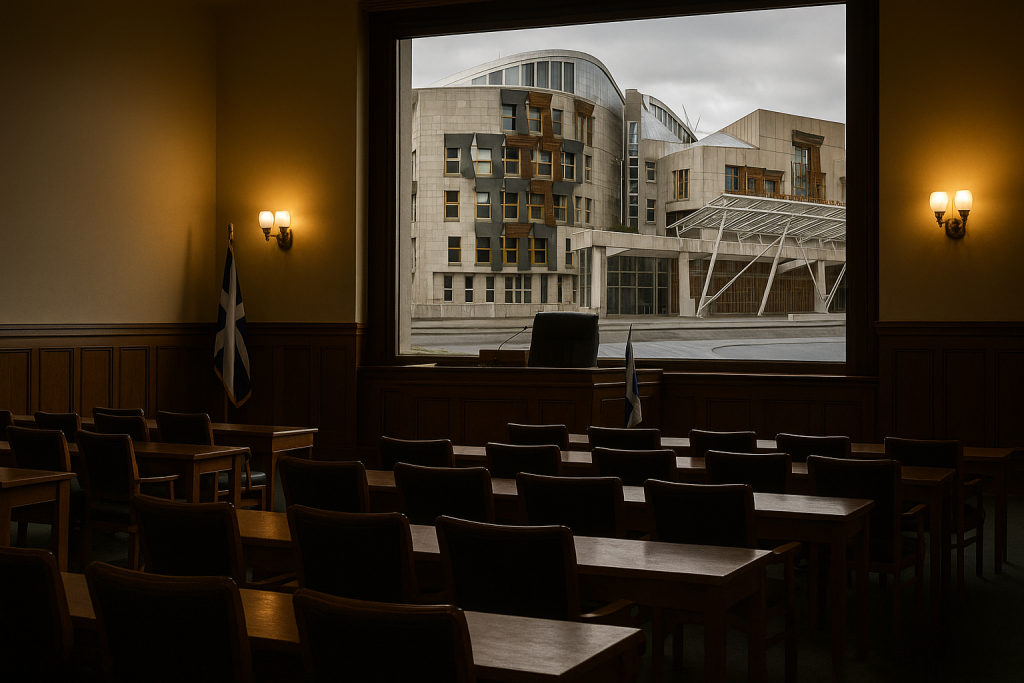
Democracy Undermined
If Scotland’s energy expansion were genuinely about balanced climate policy, communities and councils would play a decisive role. Instead, ObjectNow’s governance analysis shows how the current framework sidelines local voices to ensure national objectives prevail.
Two mechanisms are central to this outcome. First, under Section 36 of the Electricity Act 1989, projects above 50 megawatts are decided directly by Scottish Ministers. Councils may object and inquiries can be triggered, but the final decision rests entirely with ministers in Edinburgh. Local opposition, even when strong, rarely changes the outcome.
Second, National Planning Framework 4 (NPF4), adopted in 2023, embeds statutory support for renewable energy under the Town and Country Planning (Scotland) Act 1997. Policy 11 requires that “significant weight” be given to developments that contribute to renewable generation or emissions reduction. This provision hardwires a presumption in favour of approval into law.
Together, Section 36 and NPF4 create a structural imbalance. Councils and residents go through consultations, prepare detailed objections, and appear at inquiries, but their input is consistently outweighed by ministerial discretion and statutory “significant weight.”
This undermines obligations under the Aarhus Convention, which guarantees the public a right to meaningful participation in environmental decision-making. Participation that has no practical influence is not meaningful; it is procedural formality.
Institutional alignment deepens the imbalance. Local authorities that mirror national priorities tend to support applications, while those that raise environmental objections find their influence curtailed. In either case, the final decision rests with ministers, ensuring national targets dominate.
This is not an accident. Centralisation ensures that the government’s energy strategy — now closely tied to the independence case — cannot be derailed locally. Communities are offered consultation, but not power.
The result is democratic deficit: landscapes altered, objections set aside, and national ambitions enforced from the centre. For citizens, the message is clear: these projects are not being delivered for local needs, but to serve a political agenda.

Access and Influence: Developers Welcomed, Campaigners Excluded
Freedom of Information disclosures analysed by ObjectNow reveal a striking imbalance in ministerial access during live planning processes.
Developers and their consultants are regularly granted private meetings with ministers and senior officials, even while Section 36 applications are under consideration. In these sessions, developers can present their case, reinforce alignment with government targets, and influence how proposals are framed. FOI-released notes confirm that live applications were explicitly discussed in such meetings — raising serious concerns about impartiality.
By contrast, community groups are denied equivalent access. Requests from local campaigners to meet ministers during active applications were routinely rejected on grounds of “procedural propriety.” Ministers insisted they could not meet while decisions were pending, yet at the same time welcomed developers into private discussions.
This double standard undermines both fairness and legality. The Ministerial Code requires impartiality in planning matters. The Aarhus Convention guarantees equal rights of participation in environmental decision-making. Yet influence flows in one direction: towards those advancing projects that align with government priorities.
The imbalance is not incidental. Developers provide the consents and surplus generation figures the government needs for its independence narrative. Campaigners raise the inconvenient truths about carbon costs, radiological risk, and community impact. By opening doors to the former and closing them to the latter, government amplifies supportive voices while silencing dissent.
ObjectNow’s review of ministerial diaries and correspondence confirms the pattern: a revolving door for developers, a locked gate for communities. It is another example of how Scotland’s energy strategy operates not as balanced governance, but as a politically driven project in which access and influence are selectively distributed.
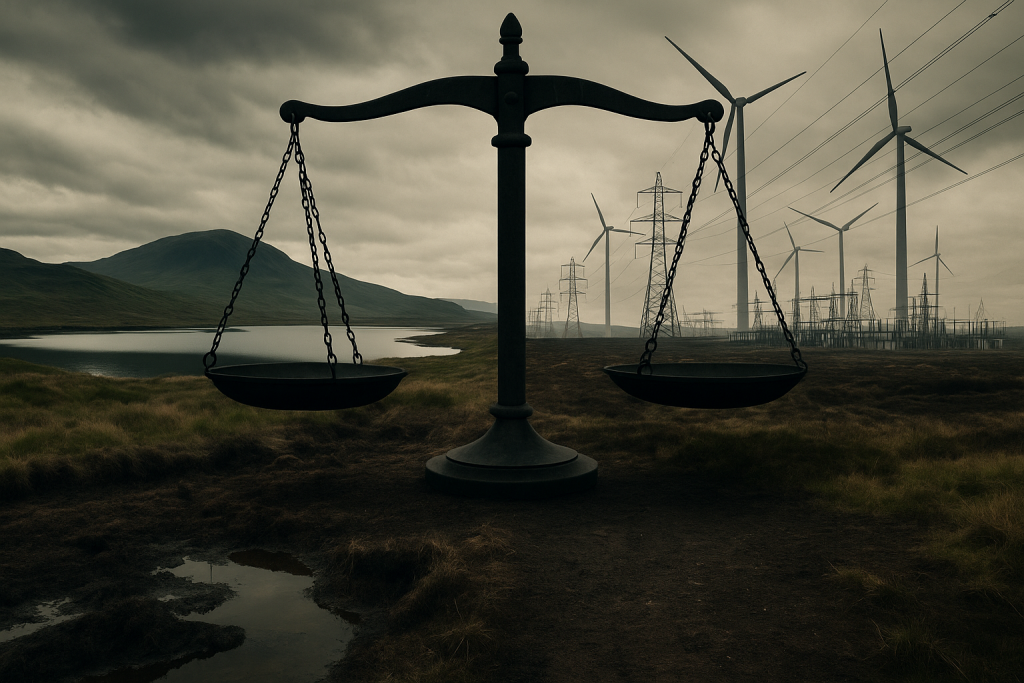
Conclusion: Independence at Any Cost
Scotland’s energy programme has not evolved as a balanced response to climate change, but as a political instrument.
The legislative framework, the weighting of planning policy, and the concentration of ministerial control have been shaped to serve a constitutional purpose: to present renewable generation as proof that Scotland could function as an independent state.
The environment and the public interest are secondary in this calculus. Safeguards are weakened, democratic participation is hollowed out, and risk is minimised or dismissed wherever it conflicts with the political narrative. Developers profit, ministers gain constitutional capital, and the countryside bears the cost.
ObjectNow does not take a position on the constitutional question itself. But it is beyond doubt that the expansion now underway serves not only the Scottish Government’s net zero claims but also the political case for independence. Constitutional ambitions now weigh as heavily as environmental obligations in shaping policy decisions. In that process, transparency, accountability, and environmental protection are being sacrificed.
What is at stake is not simply landscape or policy but the principle of lawful governance. Citizens have a right to carbon accounting that reflects reality, to site-specific radiological assessment where hazards are known, and to meaningful participation in decisions that reshape their communities.
These rights are not negotiable; they are binding duties on government.
The public must therefore respond — not out of opposition to renewable energy, but to insist that the pursuit of independence cannot override the law, the environment, or the health of Scotland’s people.

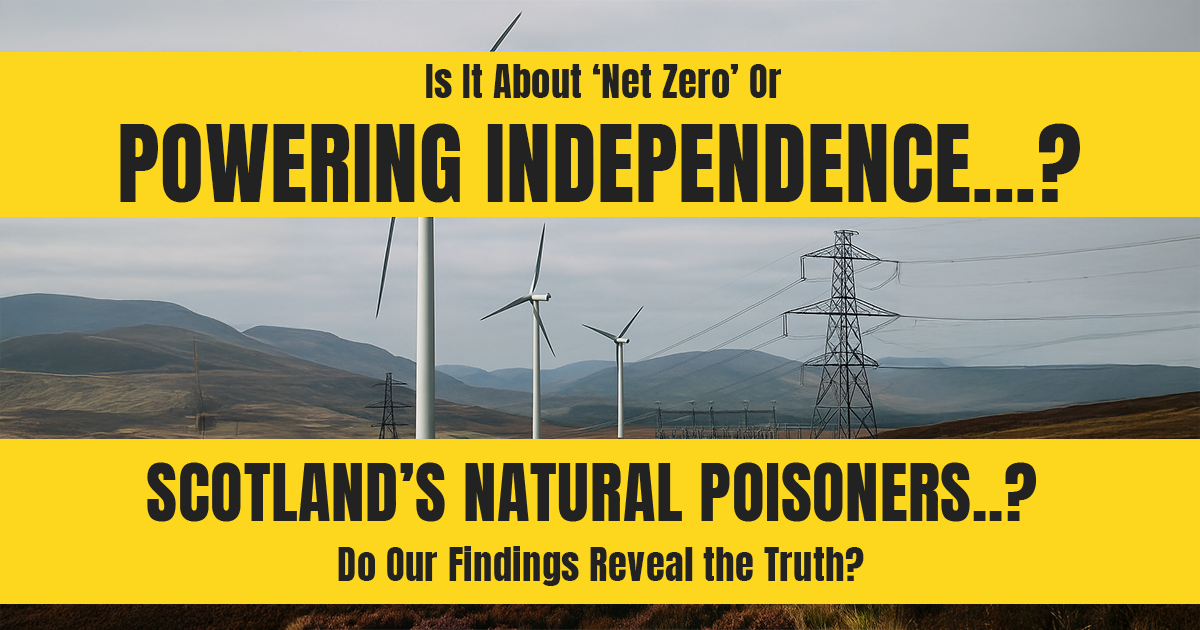

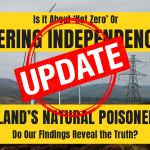
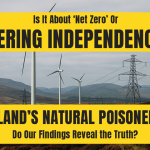

Comments
A clear and full impact assessment of all the current proposals must be made available to all voters. A pause on any further development must happen now.
No further proposal should be lodged until a clear overview is available of the cumulative effect of all the environmental disturbance of our peatlands is shown to the public. This must be done in advanced if the 2026 election .